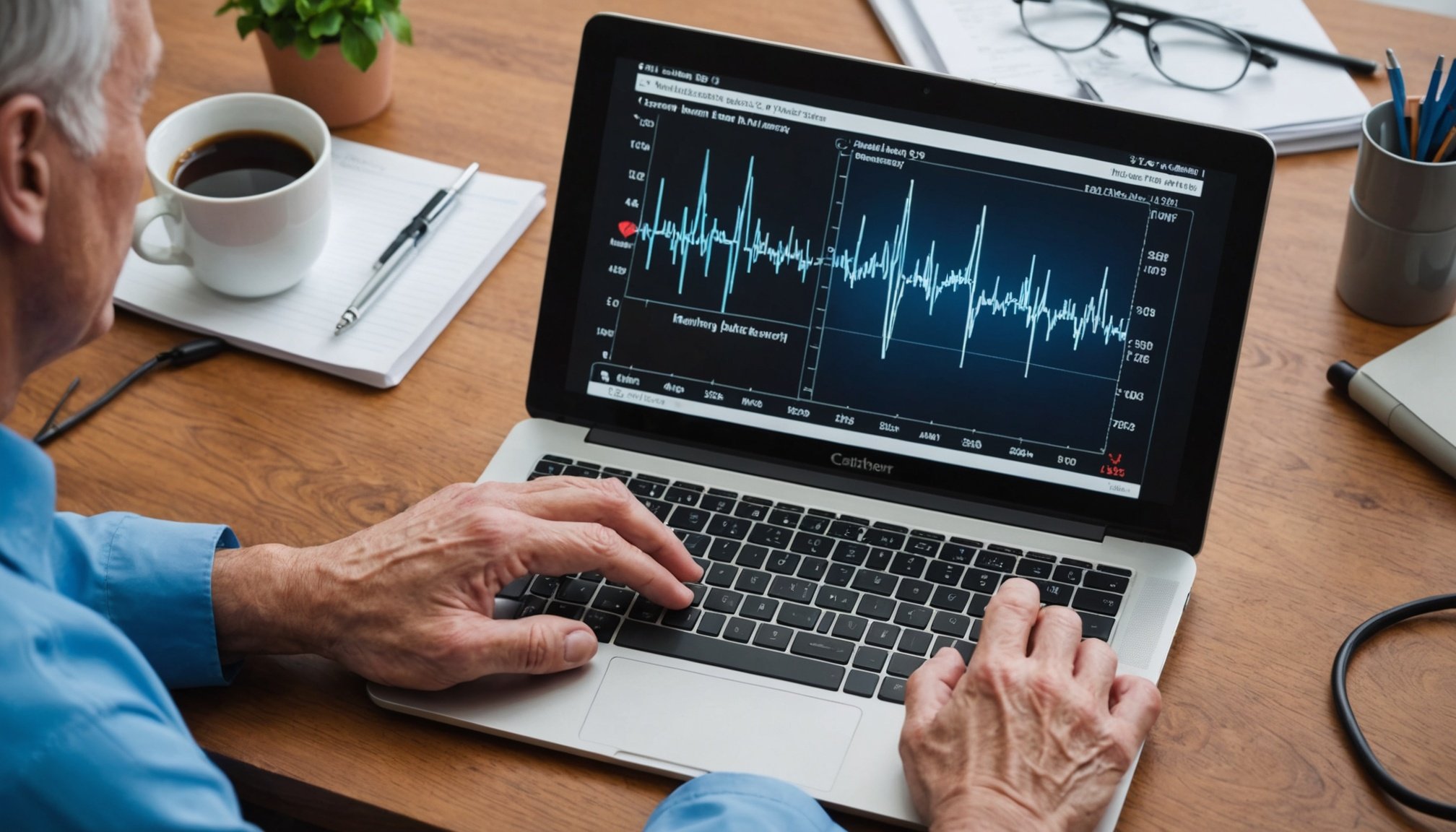Addressing the persistent challenges in heart failure management
Chronic heart failure management faces significant hurdles due to the complex nature of this condition as a chronic disease burden. Traditional challenges include inconsistent monitoring and the difficulty of timely detecting worsening symptoms. These gaps often lead to delayed interventions, negatively impacting patient outcomes.
Hospital readmissions remain a pressing issue, frequently stemming from inadequate continuous care and late recognition of exacerbations. Early detection is crucial; without it, heart failure patients risk rapid decline requiring urgent hospital visits. The persistent barriers in traditional heart failure management highlight the need for improved strategies that enable proactive rather than reactive care.
In parallel : Transforming heart failure care: the impact of remote monitoring on patient health outcomes
In practice, this means cultivating a system where patients and healthcare providers can detect subtle changes early. Enhanced monitoring technologies and patient education can help clinicians intervene promptly, thus reducing hospitalizations and easing the chronic disease burden. Overcoming these traditional challenges is vital for improving quality of life and reducing the strain on healthcare resources caused by repeated hospital readmissions.
Innovations in remote patient monitoring technologies for heart failure
Remote patient monitoring (RPM) technology has transformed heart failure management by enabling continuous, real-time health tracking outside clinical settings. Modern telemedicine tools include wearable devices, implantable sensors, and smartphone apps specifically designed to collect vital signs like heart rate, blood pressure, and fluid accumulation—critical metrics for heart failure patients.
In the same genre : What Are the Most Prevalent Health Issues Faced by the UK Today?
Wearables equipped with advanced biosensors can alert both patients and clinicians to early signs of decompensation, reducing hospital admissions. Implantable devices, integrated with digital health in cardiology platforms, offer seamless data transmission to care teams, enhancing timely interventions. Smartphone apps expand accessibility by combining monitoring with educational content and medication reminders, boosting patient engagement.
Together, these RPM technologies offer comprehensive disease management by providing continuous data collection, enabling customized treatment adjustments remotely. These innovations make telemedicine tools more than emergency responders; they become proactive partners in care, improving outcomes for people living with heart failure. The integration of sophisticated sensor technology with user-friendly digital platforms exemplifies the next generation of cardiac care solutions.
Evidence-based health outcomes associated with remote patient monitoring
Recent clinical evidence strongly supports the role of remote patient monitoring (RPM) in delivering improved patient outcomes, particularly for individuals with heart failure. Research consistently shows that RPM contributes to reduced hospitalizations by enabling early detection of symptom changes and timely intervention. For example, heart failure patients using RPM experienced significantly lower rates of hospital readmission compared to those receiving standard care.
Beyond hospitalization metrics, RPM also enhances patients’ quality of life. Continuous monitoring empowers patients with real-time insights into their health status, fostering better self-management and adherence to treatment plans. This proactive approach helps prevent exacerbations and improves daily functioning, as demonstrated in multiple clinical trials.
Clinical evidence highlights that RPM systems can detect subtle physiological changes that might otherwise go unnoticed until complications arise, thereby reducing emergency visits. Studies report quantifiable improvements—such as a 20% decrease in readmission rates—showcasing the clear benefits of integrating RPM into heart failure care.
In summary, RPM’s evidence-based benefits emphasize its potential as a crucial tool for improving both clinical outcomes and patient well-being. Understanding these advantages can help healthcare providers and patients make informed decisions about adopting RPM technologies.
Real-world examples and case studies demonstrating RPM in heart failure care
Remote patient monitoring (RPM) has shown tangible benefits in managing heart failure through numerous case studies. One prominent clinical implementation involved a community hospital integrating RPM devices to track patients’ weight, blood pressure, and symptoms daily. This approach led to earlier identification of fluid retention, enabling clinicians to adjust treatment before hospital readmissions occurred. Such remote monitoring success stories emphasize the role of continuous data in preventing acute episodes.
Another example from a large healthcare system demonstrated how RPM helped reduce emergency department visits by almost 30%. Patients used wearable sensors that transmitted vital signs directly to care teams. These clinical case examples illustrate how remote monitoring supports timely interventions, improving patient outcomes.
From these case studies, practical lessons emerge for institutions adopting RPM. Training staff on interpreting RPM data and establishing clear communication protocols with patients are critical factors. Additionally, integrating RPM results into electronic health records ensures seamless care continuity, highlighting successful clinical implementation strategies.
These examples underline RPM’s potential to enhance heart failure management. Exploring these practical success stories can inspire wider adoption and tailored solutions in diverse care settings.
Integrating remote patient monitoring into existing clinical workflows
Seamlessly embedding remote patient monitoring (RPM) into established clinical workflow integration is essential for heart failure care teams aiming to enhance patient outcomes. A critical factor is ensuring interoperability between RPM devices and current electronic health records (EHRs), allowing real-time data to flow effortlessly into clinical systems. This connectivity empowers care teams to utilize data-driven management strategies effectively.
To achieve this, care teams should collaborate closely across disciplines, sharing RPM insights to anticipate deterioration signs early. Such interaction fosters proactive disease management and informed decision-making. For instance, when RPM alerts identify abnormal fluid retention or arrhythmias, heart failure specialists can adjust therapy promptly, reducing hospitalizations.
Another successful strategy involves integrating automated RPM data summaries within clinical dashboards, providing concise patient overviews without workflow disruption. This approach minimizes clinician burden while amplifying the value of remote monitoring in routine care.
Incorporating training for staff on interpreting RPM data and adjusting protocols accordingly further strengthens adoption. These steps collectively support an RPM-integrated model that aligns with existing practices, optimizing heart failure management through collaborative, technology-enabled workflows.
Guidelines, recommendations, and future directions for RPM in heart failure
Recent clinical guidelines overwhelmingly support the integration of remote patient monitoring (RPM) in managing heart failure. Leading cardiology organizations highlight RPM as an essential tool to enhance patient outcomes by enabling continuous tracking of vital signs, symptom reporting, and timely clinical interventions. These recommendations underscore RPM’s role not just in acute care but in long-term disease management.
Looking ahead, the future of heart failure management heavily leans on technological advances that improve the accuracy, usability, and accessibility of RPM devices. Innovations such as AI-driven data analytics and wearable sensors promise more personalized care and early detection of decompensation. Additionally, scalable RPM solutions can extend care beyond specialized centers to broader populations, addressing disparities in healthcare access.
Emerging standards are beginning to define best practices for implementing RPM effectively, emphasizing interoperability with electronic health records and data security. These guidelines aim to facilitate widespread adoption while maintaining patient privacy and data integrity. As heart failure management evolves, RPM stands to become a cornerstone, supported by evolving clinical guidelines that adapt to technological advancements and real-world applications.








